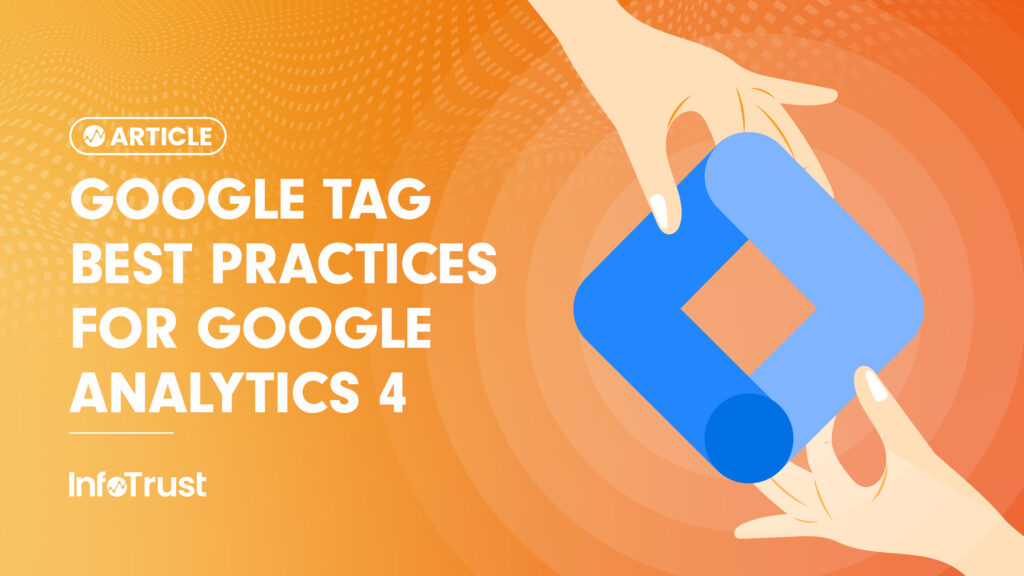After collaborating with several of my colleagues at InfoTrust including Bryan Lamb, Head of Capabilities, Corey Chapman, Senior Tag Management Engineer, Chinonso Emma-Ebere, Tech Lead for the D2C team, and Hong Cheng, Digital Analytics Consultant, I’ve boiled my (our) Google Tag best practices down to four recommendations.
1. Move non-configuration parameters and user properties in the Google Tag to an events settings variable
Reasoning:
The events settings variable is a new variable that can be configured to have certain or all Google Analytics 4 (GA4) events collect specified parameters rather than relying on the Google Tag to set parameters for all GA4 events. This mitigates the timing issue between the Google Tag and GA4 events because we are not waiting for the Google Tag to set certain parameters. Instead, we have GA4 events collect parameters utilizing the events settings variable. This also reduces the number of times we need to fire the Google Tag on a page.
Actions:
- Create an events settings variable.
- Move user properties and non-configuration parameters within the Google Tag to the events settings variable.
- Here is a list of configuration parameters that should be set with the Google Tag.
- Apply the events settings variable to all relevant GA4 events. For most clients, it’s applied to all GA4 events.
2. Manually tag Enhanced Measurement events in Google Tag Manager (GTM)
Reasoning:
Enhanced measurement allows you to automatically collect a set of basic GA4 events. When enhanced measurement is enabled, events are automatically collected leveraging the Google Tag. The benefits of manually tagging enhanced measurement events in GTM are to:
- Gain control of how we collect these events and what we collect with these events to ensure we meet business and privacy requirements.
- Not rely on the Google Tag to fire events. The Google Tag may automatically fire events in an order we don’t intend.
Actions:
- Set up tags in GTM using default triggers and variables to capture the same events collected using enhanced measurement.
- Once configured, simultaneously disable enhanced measurement in your GA4 property/properties and publish the GTM container.
3. Send page_view separate from the Google Tag
Reasoning:
The Google Tag has a configuration option to send page_view events. We recommend disabling this option and sending the page_view event separately. The benefits of not sending the page_view event with the Google Tag is that it allows us to:
- Send certain parameters only with the page_view event that we may not intend to send with other events.
- Not rely on the Google Tag to fire events. The Google Tag may automatically fire events in an order we don’t intend.
Actions:
- In GTM, in the configuration parameters section of the Google Tag, set send_page_view to false.
- In GTM, create a separate page_view tag.
4. Fire the Google Tag on initialization & before page_view
Reasoning:
It is essential to fire the Google Tag as early as possible to ensure it finishes loading earlier than any events fired on a page. Our recommendation to achieve this is to have minimal events fire with the Google Tag (achieved with best practices 2 and 3) to enable us to fire the Google Tag as early as possible on each page. We’d also sequence the Google Tag to fire before the page_view to ensure we collect any additional data added to the page_view data layer push that is part of a configuration parameter.
Actions:
- Complete best practices 2 and 3.
- Configure the Google Tag to fire on initialization.
- Configure the Google Tag to fire right before the page_view tag fires by utilizing Tag Sequencing.
- Privacy Note: The Google Tag drops cookies and sends data to GA4. Be sure that your Google Tag complies with your privacy/consent management policies.



